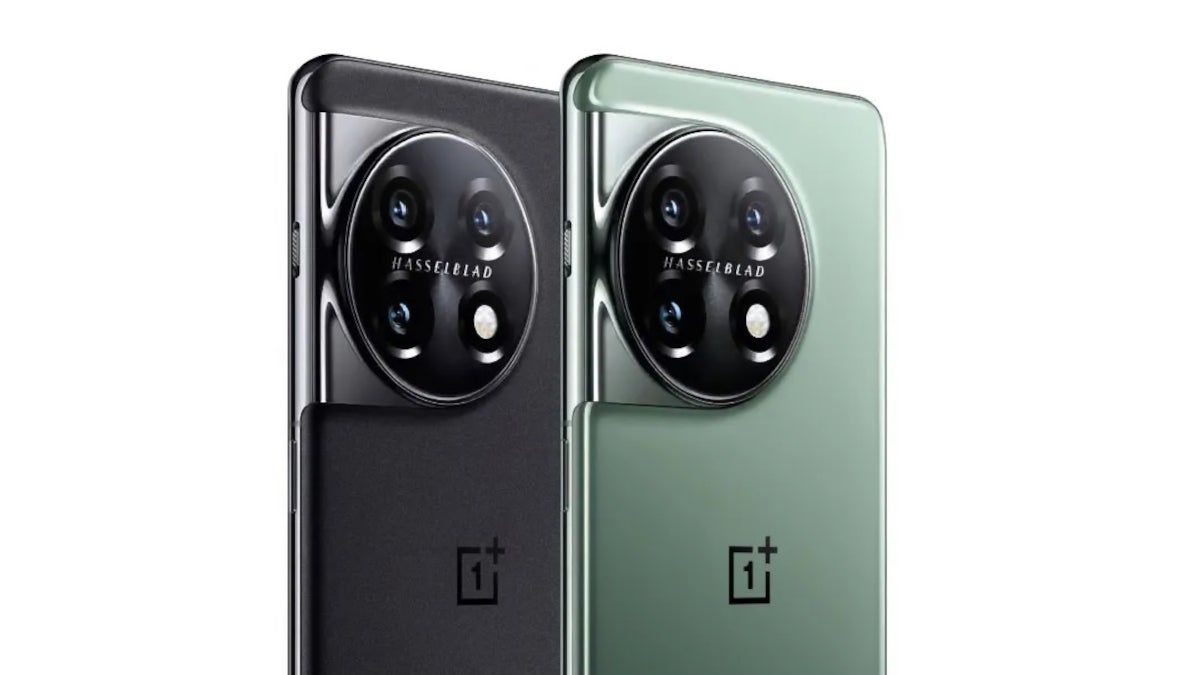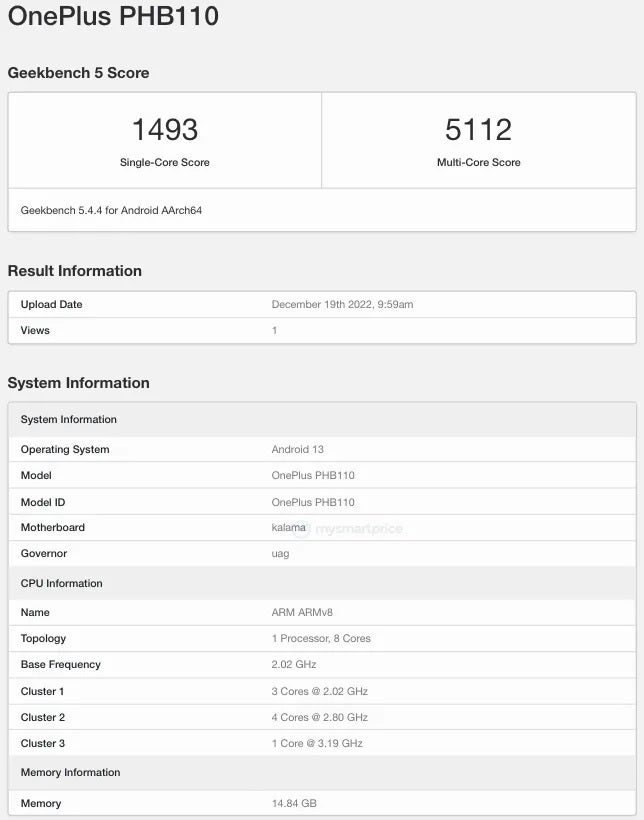Benchmark results show OnePlus 11 5G powered by Snapdragon 8 Gen 2 SoC carrying up to 16GB RAM

The workweek kicked off earlier today with a bang when the news broke about the OnePlus 11 5G; the next OnePlus model will be unveiled on February 7th. And MySmartPrice reports that a Geekbench benchmark test "confirms" that the device, model number PHB110, will be powered by the new Snapdragon 8 Gen 2 SoC. The test also shows that the device will have an option that includes 16GB of memory (other options most likely to be offered include 8GB and 12GB of RAM).
How can we tell this from the Geekbench test? Right off the bat, that one core running at a clock speed of 3.19GHz matches the speed of the high-performance Cortex X-3 core on the Snapdragon 8 Gen 2 as does the 1+3+4 architecture of the octa-core chip seen on the test results. And lastly, the listing shows that the phone will have the Adreno 740 GPU under the hood which also proves that Qualcomm's top-of-the-line Application Processor is onboard.
The iconic Active Slider is expected to return on the OnePlus 11 5G
The OnePlus 11 5G is expected to bring back the brand's iconic Alert Slider which allows the user to quickly put their handset into mute, vibrate, and ringer modes without having to unlock or wake the device. OnePlus let the feature go on the OnePlus 10T in order to have room inside the phone for other features. It was a trade-off that OnePlus has seemingly found a workaround for.

The OnePlus 11 5G Geekbench test results
Recently the OnePlus 11 5G's China Compulsory Certificate (3C) was discovered showing that the device will support 100W fast charging for the 5000mAh battery. The CCC is similar to the Underwriters Laboratory in the U.S. which tests products for safety, 3C certification is required for products that will be used in China.
The OnePlus 11 5G will reportedly feature a 6.7-inch curved AMOLED display with a 1440p resolution (QHD+) and a 120Hz refresh rate. The display will feature a corner punch-hole notch for the front-facing selfie snapper (which can also be used for video chats). Speculation calls for a 50MP primary camera on the back driven by the Sony IMX890 sensor. We could also see a 48MP ultra wide-angle lens and a 32MP telephoto lens.
The Geekbench test resulted in a single-core score of 1493 with a multi-core score of 5112. That compares to single-core and multi-core scores for the Samsung Galaxy S23 Ultra of 1504 and 4580 respectively. A second Geekbench test for the Galaxy S23 Ultra had a single-core score of 1530 and a multi-core score of 4779. On both tests, the Galaxy S23 Ultra used an overclocked Snapdragon 8 Gen 2 chipset with the Cortex X-3 core running at 3.36GHz.
If it's like the OnePlus 10T, the OnePlus 11 5G will support only sub-6GHz 5G
If the OnePlus 11 5G offers the same 5G connectivity as the OnePlus 10T, it will support sub-6GHz spectrum but not mmWave signals. This is not necessarily a bad thing. While mmWave delivers the fastest 5G download data speeds, finding such a signal is like finding an Apple employee using a Pixel 7 Pro for his daily driver. The sub-6GHz spectrum includes mid-band (and C-band) which is still about 10 times faster than 4G LTE and is much easier to come across.
It's hard to believe but we are coming up on the ninth anniversary of the release of the OnePlus One. If you recall, to buy the first generation model, consumers had to have an invitation. OnePlus used this to match supply with demand so that it wouldn't be caught building too many units. It also used its website to hold contests where invitations were awarded to winners. This allowed the company to build up a strong online fan base which is something that still continues to this day.
As recently as June 2021, more than 300 people were still using the OnePlus One as their daily driver. That information came from OnePlus CEO Pete Lau.
Follow us on Google News














Things that are NOT allowed:
To help keep our community safe and free from spam, we apply temporary limits to newly created accounts: